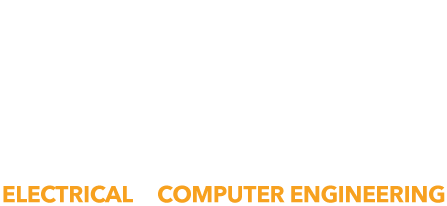ECE Seminar Series: Elements of an Innovation Ecosystem
ECE Seminar Fall 2018
October 3, 3pm-4pm, ITE 401
Elements of an Innovation Ecosystem
Dr. Barry L. Shoop
Electrical Engineering and Computer Science
U.S. Military Academy at West Point
Abstract: Clayton M. Christensen first coined the term disruptive technology in his 1995 article “Disruptive Technologies: Catching the Wave” in which he described disruptive technology as a new technology that unexpectedly displaces an established technology. Later, in his classic text The Innovator’s Dilemma, he asks the question “Why do well-managed companies fail? He concludes that they often fail because the very management practices that have allowed them to become industry leaders also make it extremely difficult for them to recognize and develop the disruptive technologies that ultimately capture their markets. Well-managed companies are excellent at developing sustaining technologies, those technologies that improve the performance of their products in ways that satisfy their customers. Disruptive technologies, however, are distinctly different and fundamentally change the value proposition in a market according to a distinct pathology. In addition to understanding disruptive innovations, we have found that it is equally important to understand the human dimension of technology innovation – how social, cultural, and religious factors impact the acceptance or rejection of technological innovation. To understand these contributing factors we include insights from three classic texts including The Structure of Scientific Revolutions by Thomas S. Kuhn, The Discoverers by Daniel J. Boorstin, and The Two Cultures by C. P. Snow. Beyond the technological and human dimensions, it is equally important to develop both the organizational structure and organizational culture dimensions that encourage and support an ecosystem of innovation. Iconic examples of the consequences of the lack of effective innovation are Blackberry, Nokia, Blockbuster, Borders and Kodak while the world’s most successful innovators such as Apple, Google, General Electric and Procter & Gamble have succeeded in embedding innovation into their very DNA.
Short bio: Barry L. Shoop is Professor of Electrical Engineering and Head of the Department of Electrical Engineering and Computer Science at the U.S. Military Academy at West Point. During his 25 years at West Point he has served in a number of key leadership positions including Director of the Photonics Research Center and Director of the Electrical Engineering Program. Currently as Professor and Head he is responsible for an undergraduate academic department with over 79 faculty and staff supporting ABET accredited programs in electrical engineering, computer science, and information technology. The department engages over 1800 students each year and has 4 affiliated research centers including the Cyber Research Center, Network Science Center, Photonics Research Center and a burgeoning Robotics Program. Dr. Shoop holds 1 patent and has authored or co-authored 8 books and book chapters, and over 146 publications. He received a B.S. from the Pennsylvania State University and Ph.D. from Stanford University, both in electrical engineering. His research interests include optical information processing, neural networks, image processing, disruptive innovations and educational pedagogy. He is a Fellow of the IEEE, OSA and SPIE, and a member of Phi Kappa Phi, Eta Kappa Nu, and Sigma Xi. Dr. Shoop served as the 2016 IEEE President and CEO. He is a licensed Professional Engineer in the Commonwealth of Virginia.
Categories: Seminars
Published: October 4, 2018
Available Archives


